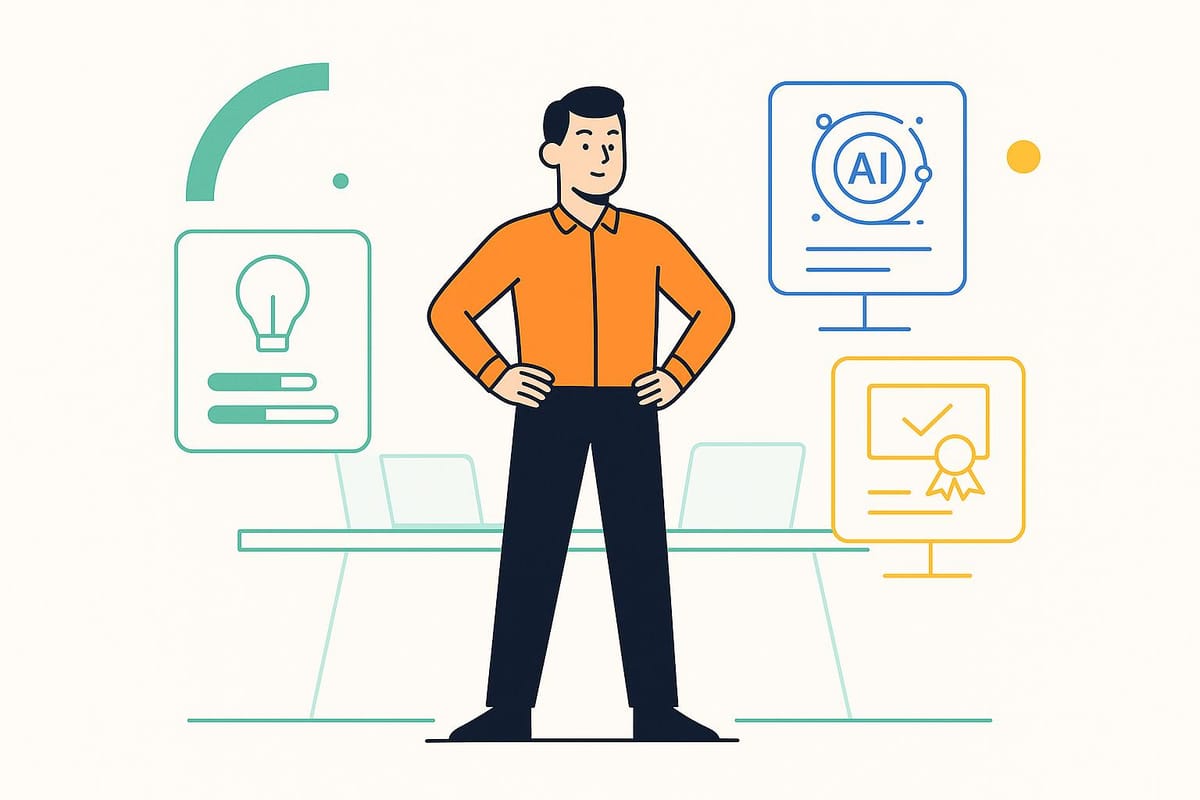OpenAI launches workforce blueprint for AI skill preparedness
OpenAI’s Workforce Blueprint outlines training, certifications, and job platforms to prepare workers for an AI-driven economy.

OpenAI, the artificial intelligence company renowned for its development of ChatGPT and DALL·E, has unveiled a comprehensive Workforce Blueprint to guide businesses, policymakers, and labor organizations in preparing for an AI-driven economy. Announced in a blog post and a LinkedIn update, the Blueprint marks a strategic move by the San Francisco-based company to address the evolving labor landscape shaped by AI.
AI adoption highlights productivity gains
As AI continues to integrate into professional environments, OpenAI has analyzed how its tools, particularly ChatGPT, are reshaping work processes. According to OpenAI’s research into ChatGPT usage data - the largest dataset of its kind - seeking information, obtaining practical guidance, and writing dominate user interactions, accounting for nearly 75% of all activities. Notably, one-third of these interactions are work-related, generating what economists refer to as consumer surplus by saving time and enhancing decision-making.
Citing research by economists Avinash Collis and Erik Brynjolfsson, OpenAI estimates this surplus could amount to nearly $100 billion annually, with many benefiting from free access to ChatGPT.
Workplace adoption patterns suggest employees are proactively leveraging AI tools for tasks such as writing, market research, and data analysis, often without waiting for formal deployment by employers. OpenAI’s findings indicate that AI is acting as an enabler, enhancing productivity rather than replacing jobs outright.
Ronnie Chatterji, OpenAI’s chief economist, remarked, "Interpreting these results requires humility. We live in an incredibly dynamic era and our tools are evolving fast. But studies like these point to an emerging pattern: so far, AI is more enabler than replacer."
Workforce Blueprint: training, certification, and jobs
At the core of OpenAI’s Workforce Blueprint are several initiatives aimed at equipping individuals and organizations to navigate AI-driven transformations:
- OpenAI Academy: A free training platform, offered both online and in person, to help people of all backgrounds and experience levels develop proficiency in AI tools.
- OpenAI Certifications: A credentialing program designed to certify professionals in various AI competencies, catering to employees, entrepreneurs, and public sector workers.
- OpenAI Jobs Platform: A talent-matching system connecting AI-skilled candidates with employers across industries and government sectors.
Additionally, OpenAI has introduced StudyMode, a feature that supports interactive learning by guiding users step-by-step through problem-solving. The company believes this tool could assist workers in preparing for new roles, earning certifications, or transitioning their careers.
Another key proposal ties OpenAI’s Stargate datacenter investments to community workforce partnerships. By collaborating with community colleges and technical schools, OpenAI aims to promote AI literacy in regions hosting its infrastructure, creating opportunities for local communities to thrive in the AI-powered economy.
AI capabilities and economic impact
OpenAI continues to evaluate how its AI models perform in economically valuable tasks. Through a new evaluation method called GDPval, the company measures AI performance in professional scenarios, such as writing legal briefs and conducting market research.
Chatterji revealed that "GPT-5-level systems now match or exceed human professionals on about half these tasks, completing them in minutes instead of hours." He acknowledged the rapid pace of development, adding that "if current progress continues, capabilities could advance significantly over the next few years."
A call for collaboration in the Intelligence Age
The Workforce Blueprint also emphasizes the importance of cross-sector collaboration to prepare society for the changes brought about by AI. OpenAI calls for investments in education, equitable access to AI tools, and long-term strategies to bridge skills gaps. The company underscores the need for a coordinated approach, combining infrastructure investment with educational and employment pipelines.
"New jobs will be created; others will evolve; some jobs will disappear - we should be clear-eyed about that", the company stated. "To help prepare for this shift and ensure that AI’s benefits reach everyone - not just the few - we’ve released a new Workforce Blueprint."
As part of its broader engagement with workforce and education discussions, OpenAI plans to host its inaugural Higher Education Guild in San Francisco later this month, focusing on AI’s role in academic research and teaching. Additionally, the company will celebrate the first anniversary of OpenAI Academy by hosting a public session aimed at expanding AI literacy.
A balanced approach to the future of work
While the Workforce Blueprint highlights significant opportunities enabled by AI, OpenAI acknowledges that the transition to an AI-driven economy will not be uniform. Some roles will inevitably disappear, while others evolve or emerge. The company stresses the importance of ensuring that the benefits of AI extend across all sectors of society.
OpenAI concludes that shared responsibility among governments, academia, and industry is critical for aligning technological innovation with economic and social equity. The Workforce Blueprint is intended as a starting point for this vital dialogue.

